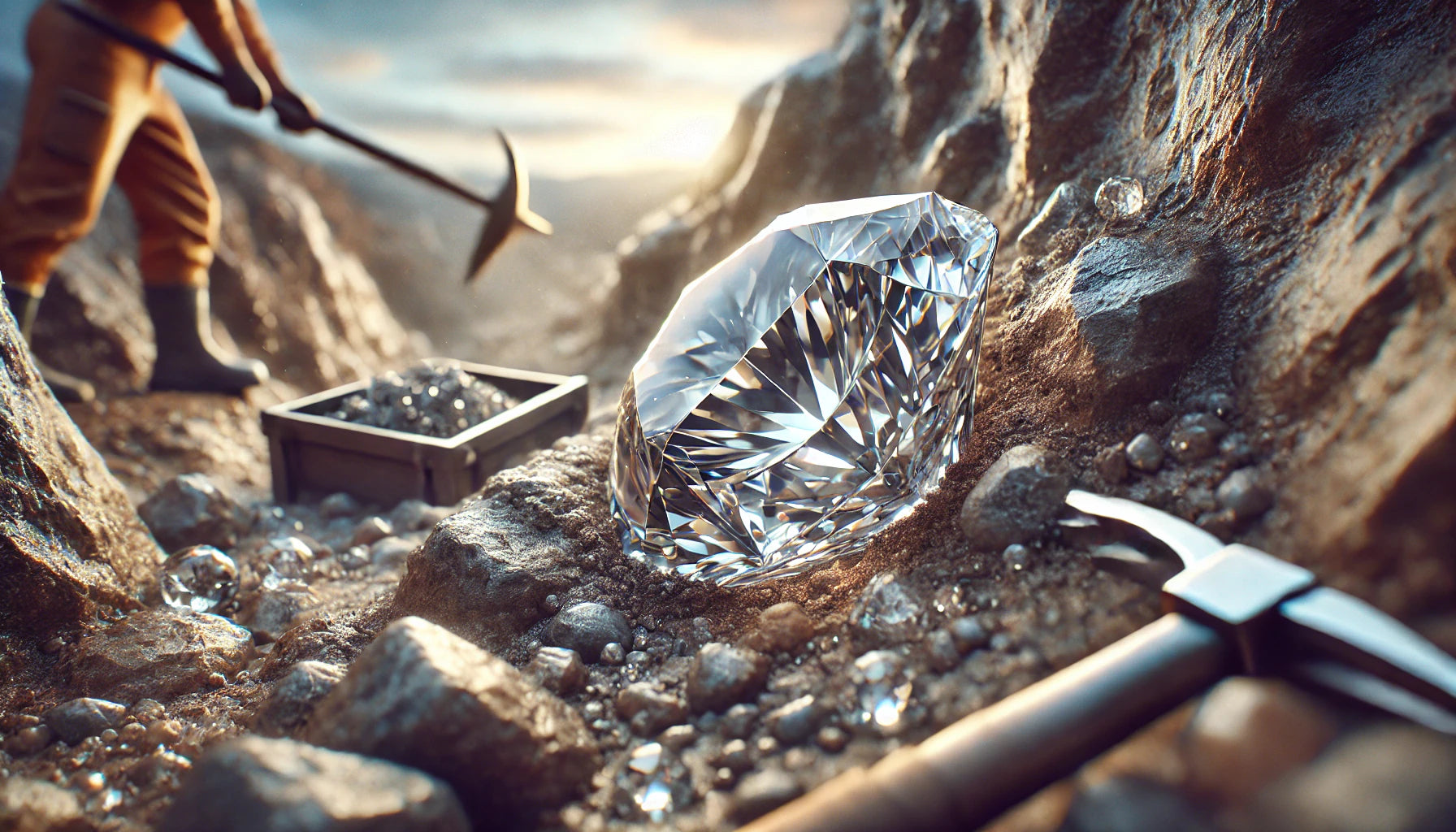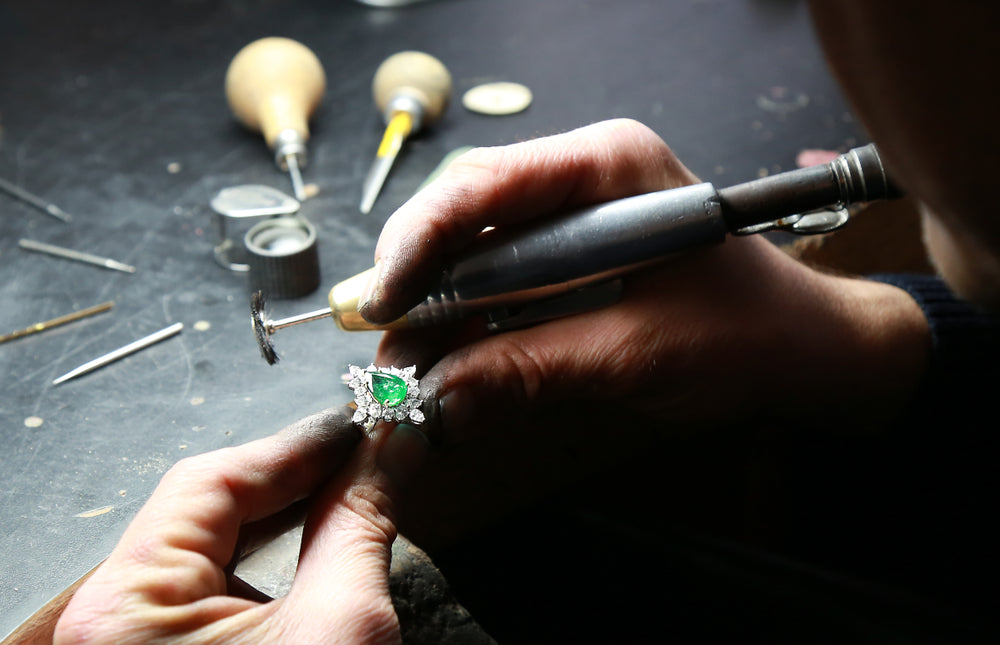
Unearthing Diamonds
Diamonds are mined in several key locations around the globe, each offering unique geological conditions. Major producers include countries like Russia, Botswana, Canada, and Australia. The mining process varies, with several methods employed to extract these precious stones.
Open-pit mining is commonly used in areas where diamonds are found near the surface, allowing for efficient excavation. Conversely, underground mining reaches deeper deposits, often extending thousands of feet below the Earth’s surface. You might wonder, how deep are diamond mines? Some can reach depths of over 4,000 feet!
Marine mining extracts diamonds from ocean floors, while alluvial mining involves sifting through riverbeds where diamonds have naturally eroded and settled. Each method reveals the incredible journey these stones take from their geological origins to becoming the dazzling diamond earrings and pendants we cherish. Understanding how diamonds are mined sheds light on the effort involved in bringing these natural wonders to market.

Sorting the Sparkles
Once diamonds are mined, the next critical step involves how diamonds are processed and sorted to determine their value and quality. This intricate process begins with a thorough examination of each stone, categorising them based on size and quality. Skilled gemologists carefully inspect the diamonds, verifying that only the finest specimens make it to the market.
Central to this evaluation are the four Cs of diamond quality: cut, colour, clarity, and carat. The cut refers to how well the diamond has been shaped and faceted, impacting its brilliance and sparkle. Colour measures the absence of hue, with clearer stones often being more valuable. Clarity assesses the presence of internal flaws or inclusions, while carat weight indicates the diamond’s size. Together, these factors not only define a diamond's beauty but also its value in the marketplace, helping consumers make informed choices when purchasing items like diamond engagement rings.

Art of Cutting and Polishing
The journey from rough stones to exquisite, precision-cut gems is a fascinating process showcasing the artistry and skill of diamond cutting. Each rough diamond is unique, and the initial assessment determines the best way to shape it while maximising its potential brilliance. Expert gem cutters carefully evaluate the stone’s characteristics, deciding on the optimal cut to highlight its natural beauty.
Once a plan is established, the cutting process begins. This intricate procedure involves using specialised tools to create facets that reflect light in stunning ways. The diamond is shaped and polished, requiring a keen eye and a steady hand to achieve perfection. This is where artistry meets science—cutters must understand light refraction and angles to produce stones that dazzle. Popular shapes include the classic round, the elegant emerald, and the romantic marquise, each offering a distinct beauty. The result is a finely crafted gem that not only sparkles brilliantly but also carries the unique fingerprint of the artisan’s expertise, making each diamond truly one of a kind.

Final Reflections
The journey of diamonds from mine to market is a remarkable transformation involving careful sourcing, sorting, and craftsmanship. Understanding how diamonds are found and mined is essential for consumers today. By prioritising ethical sourcing and conscious consumerism, we can appreciate these beautiful gems while supporting sustainable practices in the industry.








